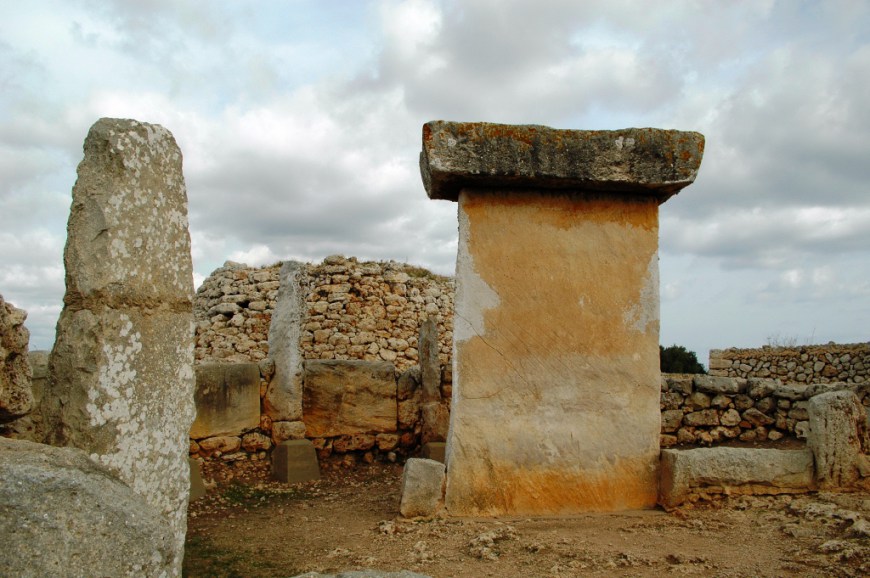Megaliths. Talaiots and Taules.

It seems that the building of these structures began about 1300 b.c. and continued until the arrival of the Romans. There are so many of them that hundreds of sites teeming with archaeological interest are found on Minorca.
Even the most casual visitor cannot ignore there presence, as, no matter where you go, many of them can be seen from the road. Talaiots, taules, walls of defence built of gigantic stones around prehistoric villages, navetas or burial chambers, pillared naves… all of a variety and abundance that have given rise to the most esoteric and picturesque theories on the original inhabitants of Minorca.
At Wind Fornells we’re really expert at teaching sailing, not archaeology, so we’ll stick to pointing out where the most important remains are and give a couple of brief descriptions of the major types of construction. The pillared naves are generally oval in shape and covered with large stone slabs. The navetas look like the inverted hull of a ship, hence their name, and seem to have been funeral chambers. The most characteristic structures on Minorca are the talaiots and taules.
Talaiots
These are great tower-shaped stone constructions of up to 8 metres in height and an average diameter of about 15 metres. The most sophisticated have rooms surrounding a central stone column. Noteworthy are the ones at Sant Agustí Vell, in Migjorn; Torrelló and Trepucó -this last having a base diameter of almost 26 m – in Mahon and Alaior, and also in Alaior, the talaiots of Torralba d’en Salord and Torre d’en Gaumés. Near Ciutadella we find, Torrellafuda, Santa Mònica, again in Migjorn, and Son Catlar.
Taules
These were temple structures and are shaped like an enormous “T” made of gigantic rectangular stone slabs. The most remarkable are found at Torre Trencada, Talatí de Dalt -this one unique because of the slab diagonally supporting the upright stone – Torrellissá Nou, Trepucó, and the site at Torralba d’en Salord, whose enormous upright is buried to the depth of two metres.
This is necessarily exceedingly brief because there are hundreds of megaliths in Minorca and this is a Windsurf and Sailing Website, so I’m sure you’ll understand. Two last points of interest.
The Torre d’en Gaumés is the largest prehistoric village to be found in the Balearic Islands. It boasts three striking talaiots surrounded by a defensive wall, pillared naves and a taula whose cross-piece lies on the ground next to the upright. Nearby is a dolmen burial chamber, Ses Roques Llises. This village is found to the south of Alaior, between the village and beach at Son Bou, the longest on Minorca.
The Naveta dels Tudons is the most well-known monument on Minorca and is the cathedral of prehistoric monuments. Two stories high, it is 13.5 m. long and 6.4m wide. The apses remind one of a ship’s bows and the simile of an upturned boat fits perfectly.
It is generally accepted that the navetas were funeral structures, but the legends surrounding them are legion. The Naveta d’es Tudons is just outside Ciutadella, on the left coming from Mahon and it’s a good idea to go at daybreak when you can enjoy the atmosphere of peace and quiet the contemplation of this outstanding monument deserves.
Caves
I’ll briefly mention the caves, mostly dotted around the southern part of Minorca. These were the first dwellings and date from 2,000 b.c. Some still have their natural chimneys. The most famous caves are found at Calas Coves, used by the Romans as a religious centre, but there are more: Cala Morell on the North Coast, Macarella, Alcaufar…There are also burial caves with vertical graves at Cala en Forcat.
